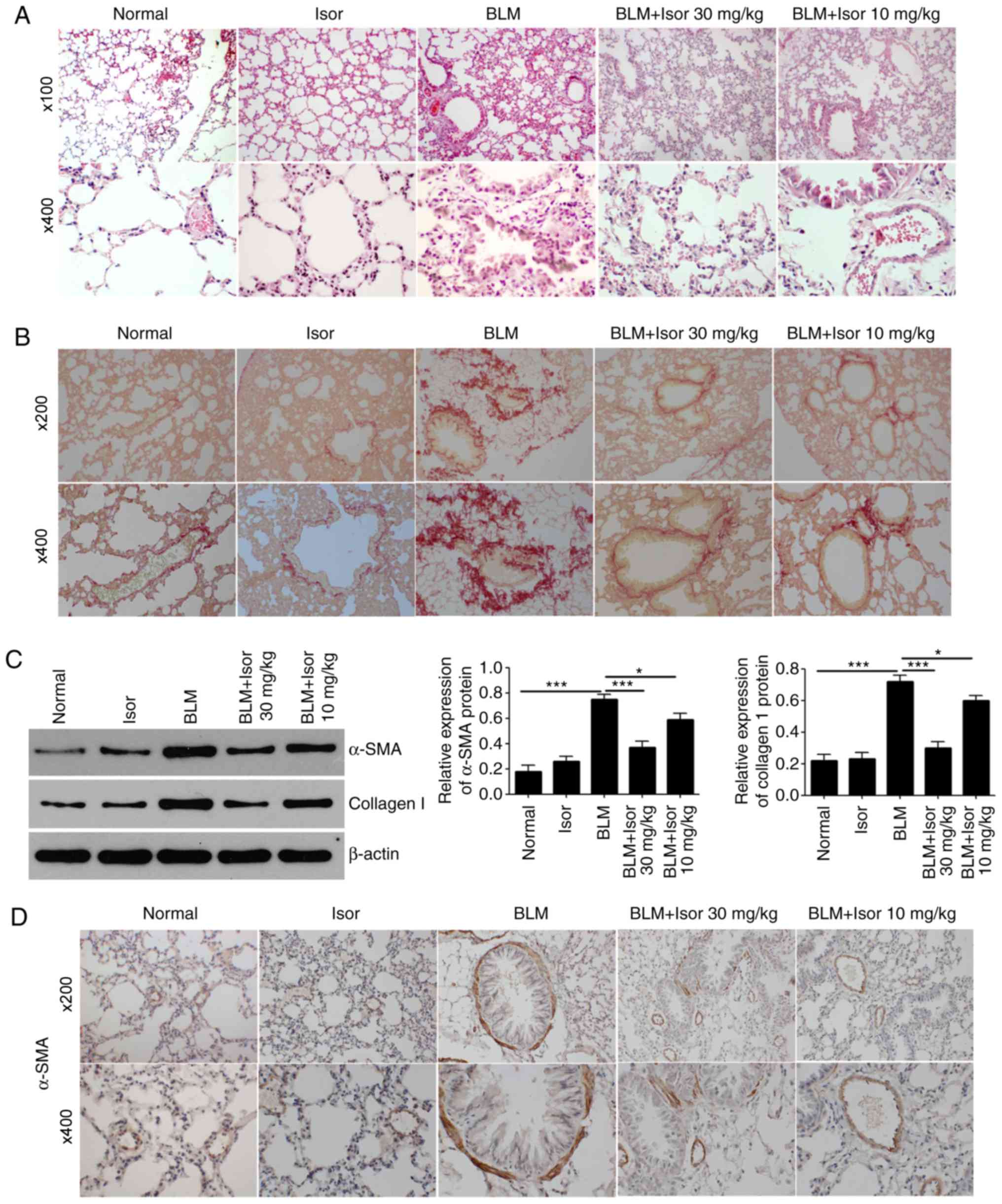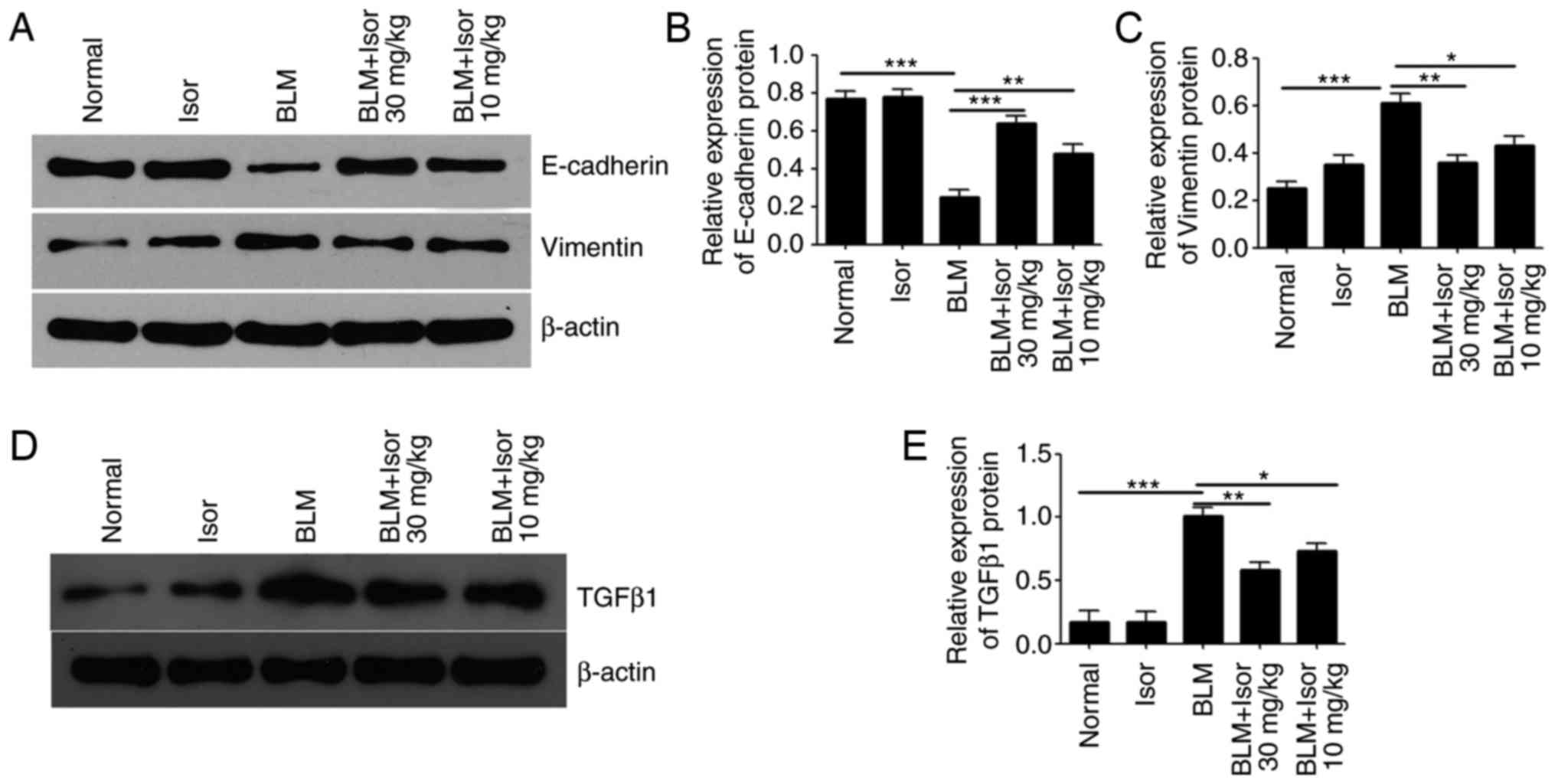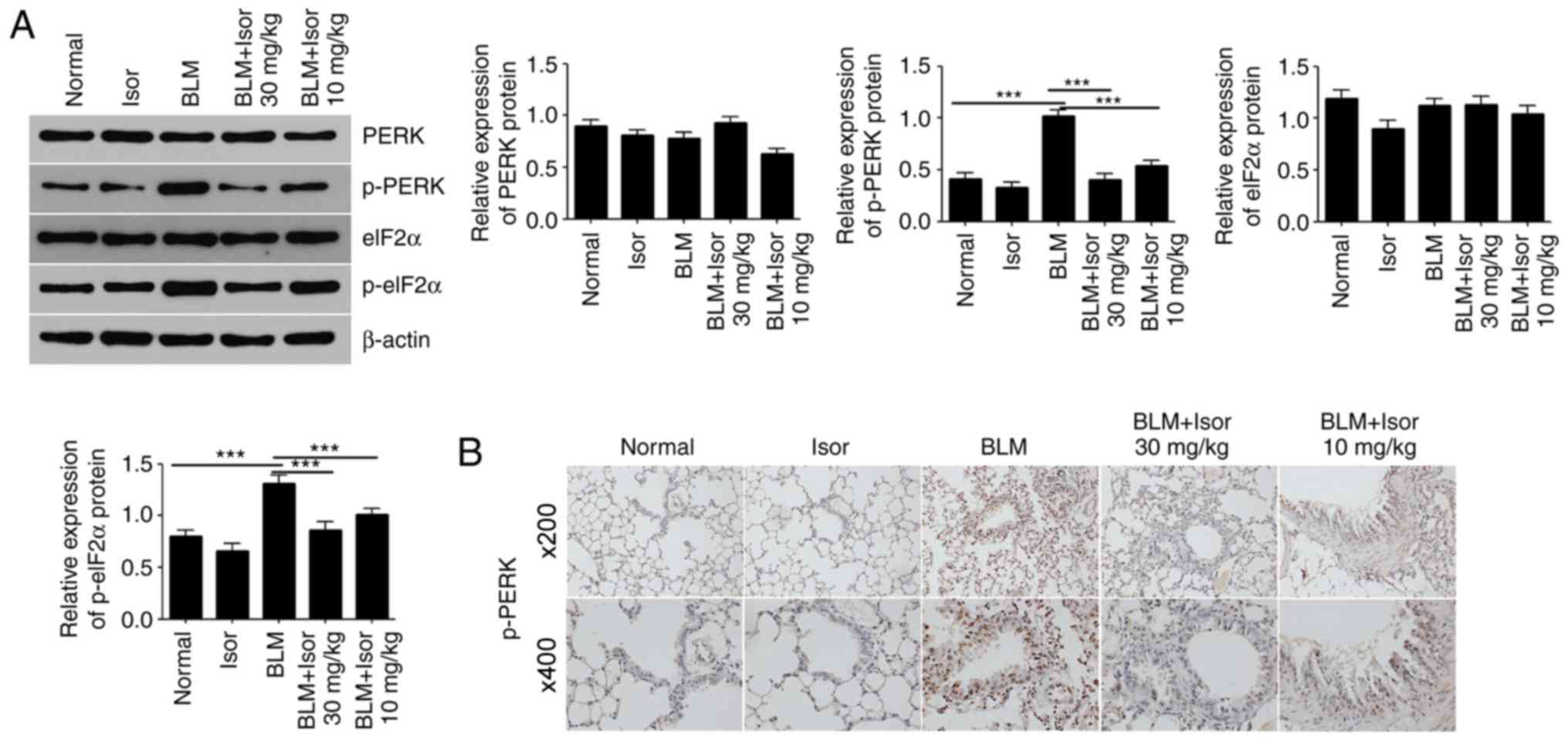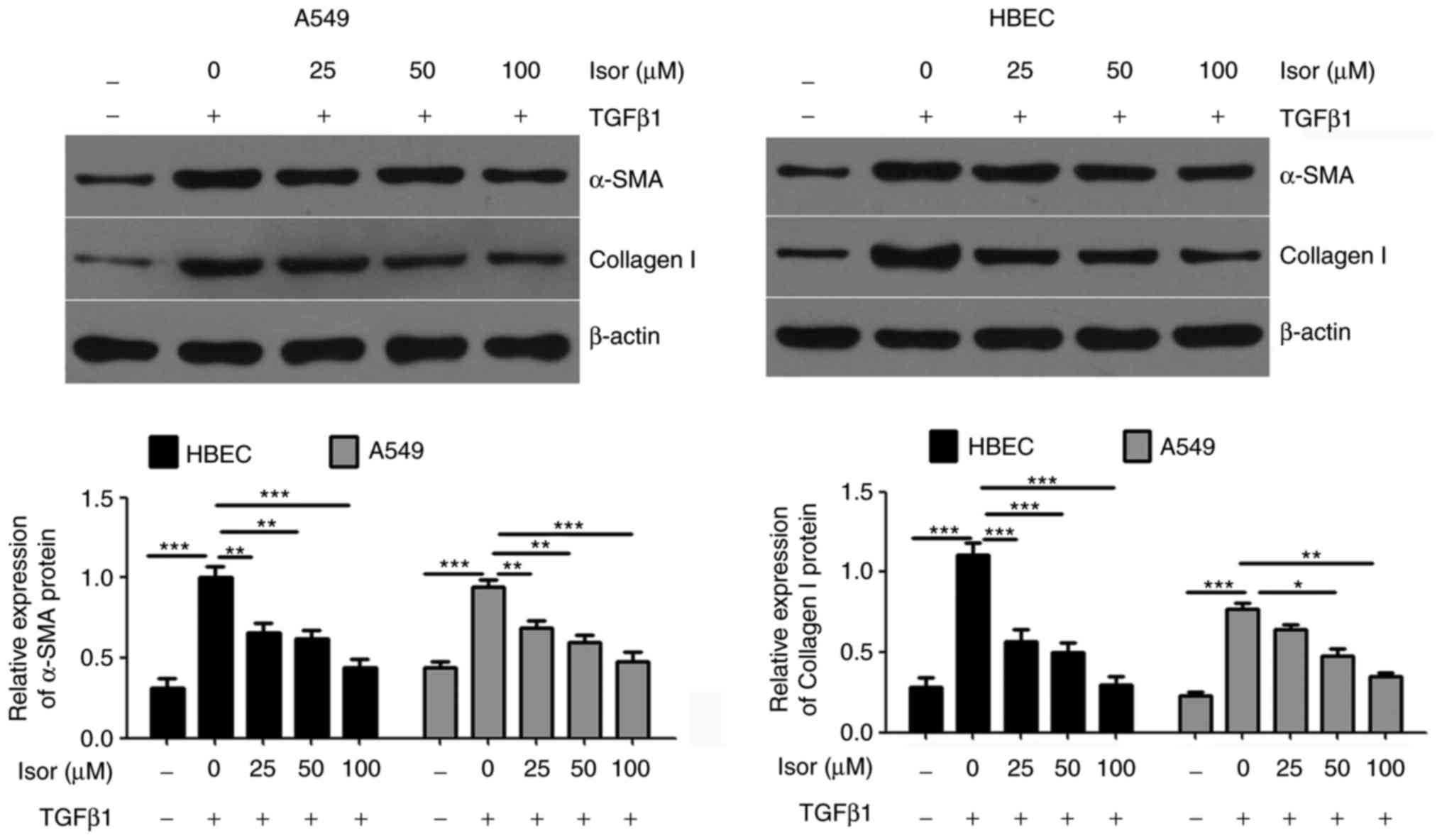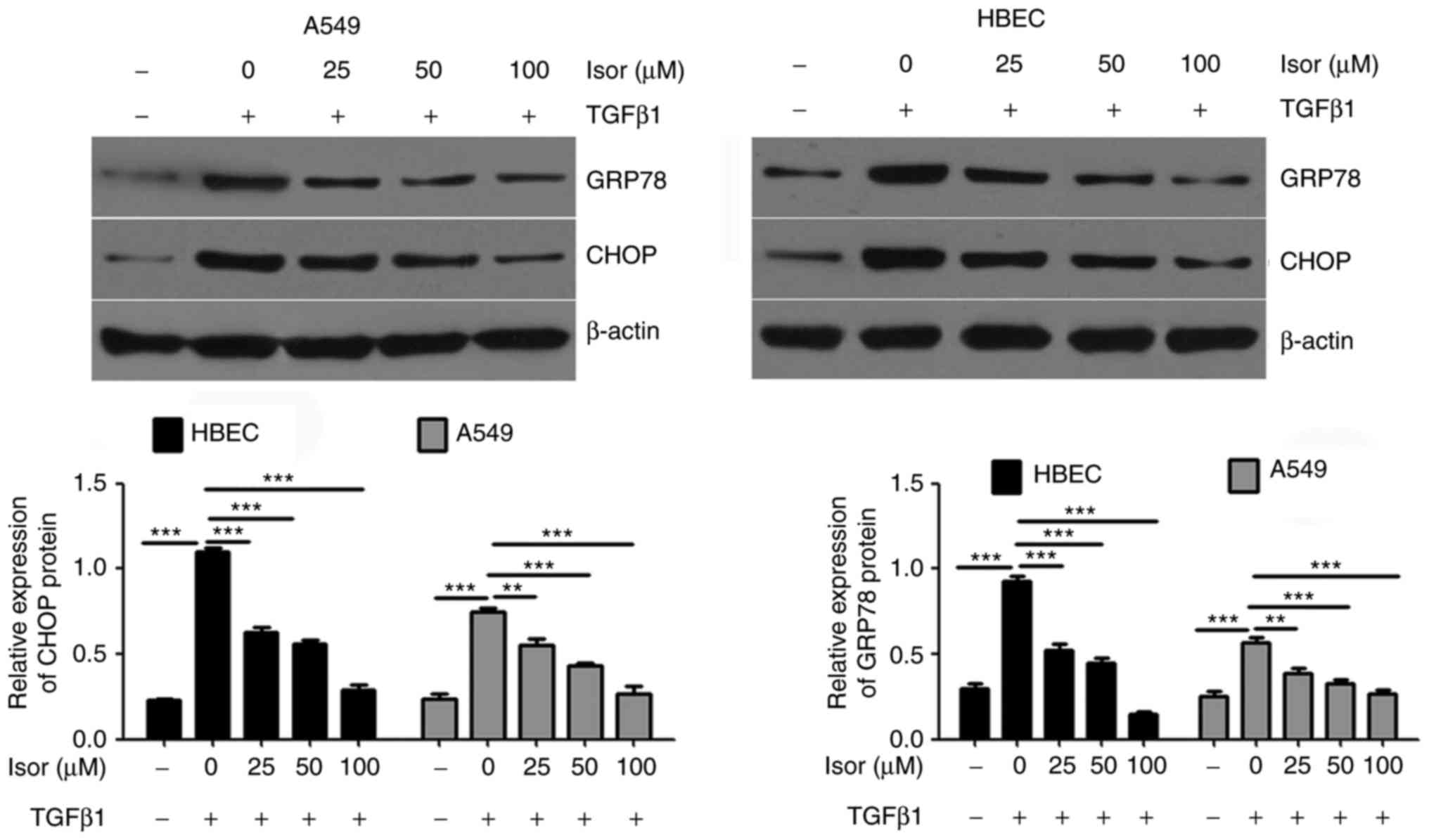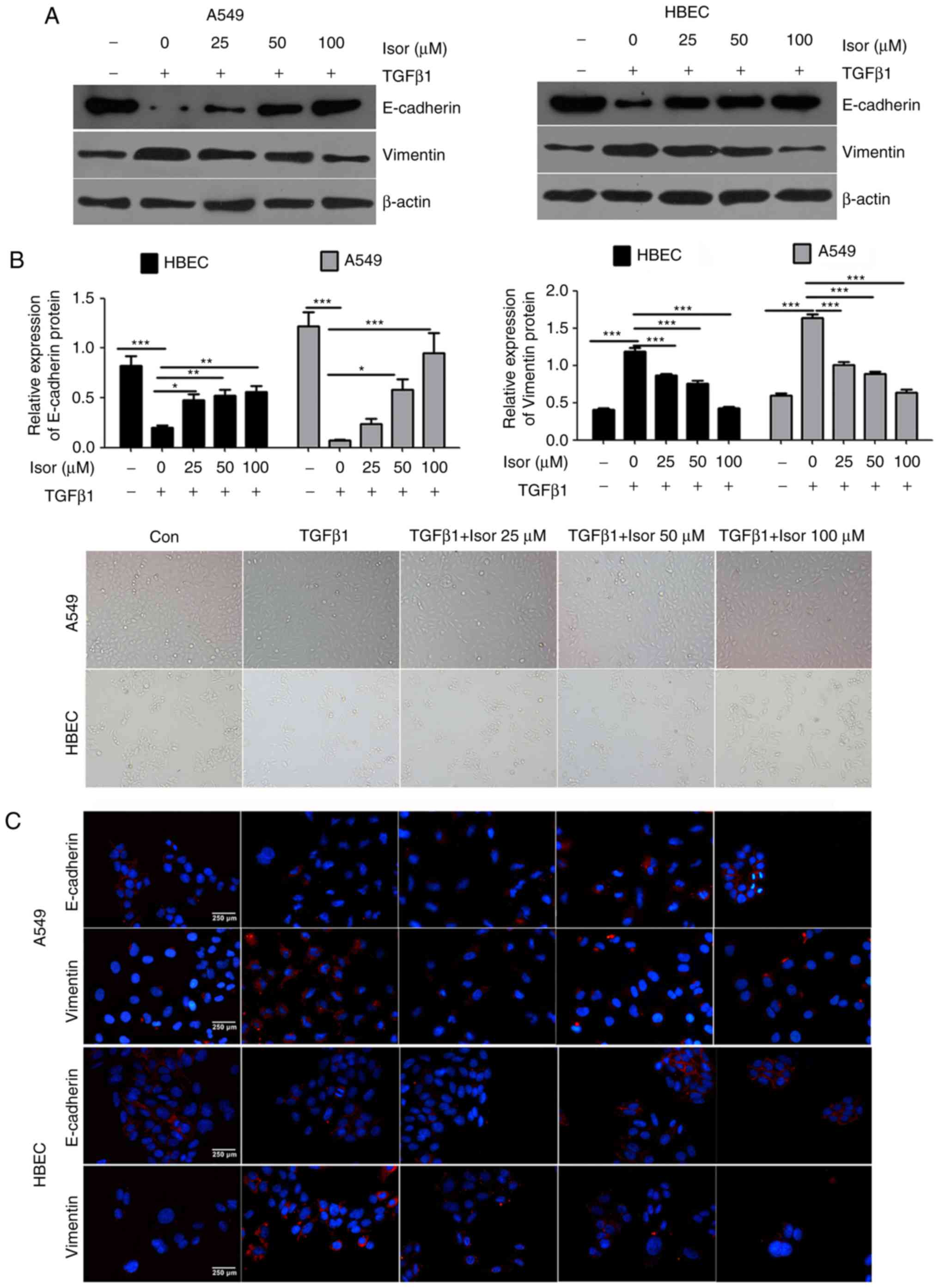|
1
|
King TE Jr, Pardo A and Selman M:
Idiopathic pulmonary fibrosis. Lancet. 378:1949–1961. 2011.
View Article : Google Scholar : PubMed/NCBI
|
|
2
|
Wolters PJ, Collard HR and Jones KD:
Pathogenesis of idiopathic pulmonary fibrosis. Annu Rev Pathol.
9:157–179. 2014. View Article : Google Scholar :
|
|
3
|
Raghu G, Collard HR, Egan JJ, Martinez FJ,
Behr J, Brown KK, Colby TV, Cordier JF, Flaherty KR, Lasky JA, et
al: An official ATS/ERS/JRS/ALAT statement: Idiopathic pulmonary
fibrosis: Evidence-based guidelines for diagnosis and management.
Am J Respir Crit Care Med. 183:788–824. 2011. View Article : Google Scholar : PubMed/NCBI
|
|
4
|
Raghu G, Rochwerg B, Zhang Y, Garcia CA,
Azuma A, Behr J, Brozek JL, Collard HR, Cunningham W, Homma S, et
al: An official ATS/ERS/JRS/ALAT clinical practice guideline:
Treatment of idiopathic pulmonary fibrosis. An update of the 2011
clinical practice guideline. Am J Respir Crit Care Med.
192:e3-e192015. View Article : Google Scholar
|
|
5
|
Walter N, Collard HR and King TE Jr:
Current perspectives on the treatment of idiopathic pulmonary
fibrosis. Proc Am Thorac Soc. 3:330–338. 2006. View Article : Google Scholar : PubMed/NCBI
|
|
6
|
Borensztajn K, Crestani B and Kolb M:
Idiopathic pulmonary fibrosis: From epithelial injury to
biomarkers-insights from the bench side. Respiration. 86:441–452.
2013. View Article : Google Scholar
|
|
7
|
Li T, Yang X, Xin S, Cao Y and Wang N:
Paraquat poisoning induced pulmonary epithelial mesenchymal
transition through Notch1 pathway. Sci Rep. 7:9242017. View Article : Google Scholar : PubMed/NCBI
|
|
8
|
Wang YC, Liu JS, Tang HK, Nie J, Zhu JX,
Wen LL and Guo QL: miR-221 targets HMGA2 to inhibit
bleomycin-induced pulmonary fibrosis by regulating
TGF-β1/Smad3-induced EMT. Int J Mol Med. 38:1208–1216. 2016.
View Article : Google Scholar : PubMed/NCBI
|
|
9
|
Huang M, Wang YP, Zhu LQ, Cai Q, Li H and
Yang HF: MAPK pathway mediates epithelial-mesenchymal transition
induced by paraquat in alveolar epithelial cells. Environ Toxicol.
31:1407–1414. 2016. View Article : Google Scholar : PubMed/NCBI
|
|
10
|
Takemasa A, Ishii Y and Fukuda T: A
neutrophil elastase inhibitor prevents bleomycin-induced pulmonary
fibrosis in mice. Eur Respir J. 40:1475–1482. 2012. View Article : Google Scholar : PubMed/NCBI
|
|
11
|
Back SH, Lee K, Vink E and Kaufman RJ:
Cytoplasmic IRE1alpha-mediated XBP1 mRNA splicing in the absence of
nuclear processing and endoplasmic reticulum stress. J Biol Chem.
281:18691–18706. 2006. View Article : Google Scholar : PubMed/NCBI
|
|
12
|
Galligan JJ, Smathers RL, Shearn CT, Fritz
KS, Backos DS, Jiang H, Franklin CC, Orlicky DJ, Maclean KN and
Petersen DR: Oxidative stress and the ER stress response in a
murine model for early-stage alcoholic liver disease. J Toxicol.
2012.207594:2012.
|
|
13
|
Baek HA, Kim DS, Park HS, Jang KY, Kang
MJ, Lee DG, Moon WS, Chae HJ and Chung MJ: Involvement of
endoplasmic reticulum stress in myofibroblastic differentiation of
lung fibroblasts. Am J Respir Cell Mol Biol. 46:731–739. 2012.
View Article : Google Scholar
|
|
14
|
Tanjore H, Lawson WE and Blackwell TS:
Endoplasmic reticulum stress as a pro-fibrotic stimulus. Biochim
Biophys Acta. 1832.940–947. 2013.
|
|
15
|
Lawson WE, Cheng DS, Degryse AL, Tanjore
H, Polosukhin VV, Xu XC, Newcomb DC, Jones BR, Roldan J, Lane KB,
et al: Endoplasmic reticulum stress enhances fibrotic remodeling in
the lungs. Proc Natl Acad Sci USA. 108:10562–10567. 2011.
View Article : Google Scholar : PubMed/NCBI
|
|
16
|
Lawson WE, Crossno PF, Polosukhin VV,
Roldan J, Cheng DS, Lane KB, Blackwell TR, Xu C, Markin C, Ware LB,
et al: Endoplasmic reticulum stress in alveolar epithelial cells is
prominent in IPF: Association with altered surfactant protein
processing and herpesvirus infection. Am J Physiol Lung Cell Mol
Physiol. 294:L1119–L1126. 2008. View Article : Google Scholar : PubMed/NCBI
|
|
17
|
Chiang CK, Hsu SP, Wu CT, Huang JW, Cheng
HT, Chang YW, Hung KY, Wu KD and Liu SH: Endoplasmic reticulum
stress implicated in the development of renal fibrosis. Mol Med.
17:1295–1305. 2011. View Article : Google Scholar : PubMed/NCBI
|
|
18
|
Ayala P, Montenegro J, Vivar R, Letelier
A, Urroz PA, Copaja M, Pivet D, Humeres C, Troncoso R, Vicencio JM,
et al: Attenuation of endoplasmic reticulum stress using the
chemical chaperone 4-phenylbutyric acid prevents cardiac fibrosis
induced by isoproterenol. Exp Mol Pathol. 92:97–104. 2012.
View Article : Google Scholar
|
|
19
|
Spitler KM and Webb RC: Endoplasmic
reticulum stress contributes to aortic stiffening via proapoptotic
and fibrotic signaling mechanisms. Hypertension. 63:e40-e452014.
View Article : Google Scholar
|
|
20
|
Ahn H and Lee GS: Isorhamnetin and
hyperoside derived from water dropwort inhibits inflammasome
activation. Phytomedicine. 24:77–86. 2017. View Article : Google Scholar : PubMed/NCBI
|
|
21
|
Gao L, Yao R, Liu Y, Wang Z, Huang Z, Du
B, Zhang D, Wu L, Xiao L and Zhang Y: Isorhamnetin protects against
cardiac hypertrophy through blocking PI3K-AKT pathway. Mol Cell
Biochem. 429:167–177. 2017. View Article : Google Scholar : PubMed/NCBI
|
|
22
|
Yang JH, Kim SC, Kim KM, Jang CH, Cho SS,
Kim SJ, Ku SK, Cho IJ and Ki SH: Isorhamnetin attenuates liver
fibrosis by inhibiting TGF-β/Smad signaling and relieving oxidative
stress. Eur J Pharmacol. 783:92–102. 2016. View Article : Google Scholar : PubMed/NCBI
|
|
23
|
Yang B, Li XP, Ni YF, Du HY, Wang R, Li
MJ, Wang WC, Li MM, Wang XH, Li L, et al: Protective effect of
isorhamnetin on lipopolysaccharide-induced acute lung injury in
mice. Inflammation. 39:129–137. 2016. View Article : Google Scholar
|
|
24
|
Knudsen L, Ruppert C and Ochs M: Tissue
remodelling in pulmonary fibrosis. Cell Tissue Res. 367:607–626.
2017. View Article : Google Scholar
|
|
25
|
Higashiyama H, Yoshimoto D, Okamoto Y,
Kikkawa H, Asano S and Kinoshita M: Receptor-activated Smad
localisation in bleomycin-induced pulmonary fibrosis. J Clin
Pathol. 60:283–289. 2007. View Article : Google Scholar
|
|
26
|
Zhuang Y, Dai J, Wang Y, Zhang H, Li X,
Wang C, Cao M, Liu Y, Ding J, Cai H, et al: MiR-338* targeting
smoothened to inhibit pulmonary fibrosis by epithelial-mesenchymal
transition. Am J Transl Res. 8:3206–3213. 2016.
|
|
27
|
Rodríguez-Rodríguez C, Torres N,
Gutiérrez-Uribe JA, Noriega LG, Torre-Villalvazo I, Leal-Díaz AM,
Antunes-Ricardo M, Márquez-Mota C, Ordaz G, Chavez-Santoscoy RA, et
al: The effect of isorhamnetin glycosides extracted from Opuntia
ficus-indica in a mouse model of diet induced obesity. Food Funct.
6:805–815. 2015. View Article : Google Scholar : PubMed/NCBI
|
|
28
|
Zhao H, Qin HY, Cao LF, Chen YH, Tan ZX,
Zhang C and Xu DX: Phenylbutyric acid inhibits
epithelial-mesenchymal transition during bleomycin-induced lung
fibrosis. Toxicol Lett. 232:213–220. 2015. View Article : Google Scholar
|
|
29
|
Tian R, Zhu Y, Yao J, Meng X, Wang J, Xie
H and Wang R: NLRP3 participates in the regulation of EMT in
bleomycin-induced pulmonary fibrosis. Exp Cell Res. 357:328–334.
2017. View Article : Google Scholar : PubMed/NCBI
|
|
30
|
Zhou XM, Wang GL, Wang XB 2, Liu L, Zhang
Q, Yin Y, Wang QY, Kang J and Hou G: GHK peptide inhibits
bleo-mycin-induced pulmonary fibrosis in mice by suppressing
TGFbeta1/Smad-mediated epithelial-to-mesenchymal transition. Front
Pharmacol. 8:9042017. View Article : Google Scholar
|
|
31
|
Wynn TA and Ramalingam TR: Mechanisms of
fibrosis: Therapeutic translation for fibrotic disease. Nat Med.
18:1028–1040. 2012. View
Article : Google Scholar : PubMed/NCBI
|
|
32
|
Uhal BD, Nguyen H, Dang M, Gopallawa I,
Jiang J, Dang V, Ono S and Morimoto K: Abrogation of ER
stress-induced apoptosis of alveolar epithelial cells by
angiotensin 1–7. Am J Physiol Lung Cell Mol Physiol. 305:L33–L41.
2013. View Article : Google Scholar : PubMed/NCBI
|
|
33
|
Winters CJ, Koval O, Murthy S, Allamargot
C, Sebag SC, Paschke JD, Jaffer OA, Carter AB and Grumbach IM:
CaMKII inhibition in type II pneumocytes protects from
bleomycin-induced pulmonary fibrosis by preventing
Ca2+-dependent apoptosis. Am J Physiol Lung Cell Mol
Physiol. 310:L86–L94. 2016. View Article : Google Scholar
|
|
34
|
Wang YC, Dong J, Nie J, Zhu JX, Wang H,
Chen Q, Chen JY, Xia JM and Shuai W: Amelioration of
bleomycin-induced pulmonary fibrosis by chlorogenic acid through
endoplasmic reticulum stress inhibition. Apoptosis. 22:1147–1156.
2017. View Article : Google Scholar : PubMed/NCBI
|
|
35
|
PLOS ONE Staff: Correction: Melatonin
inhibits endoplasmic reticulum stress and epithelial-mesenchymal
transition during bleomycin-induced pulmonary fibrosis in mice.
PLoS One. 10:e1193812015.
|



